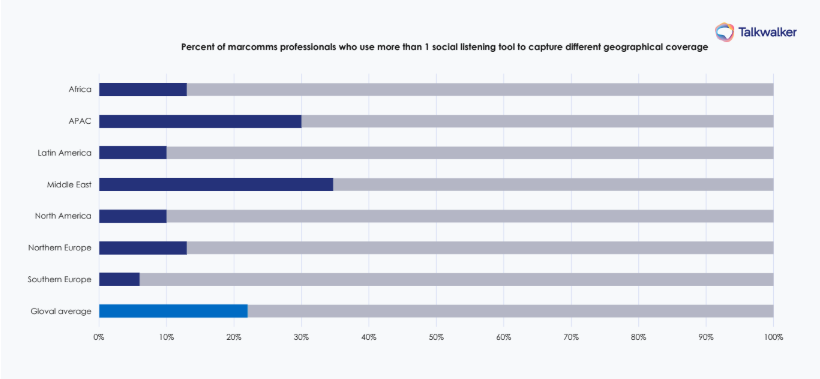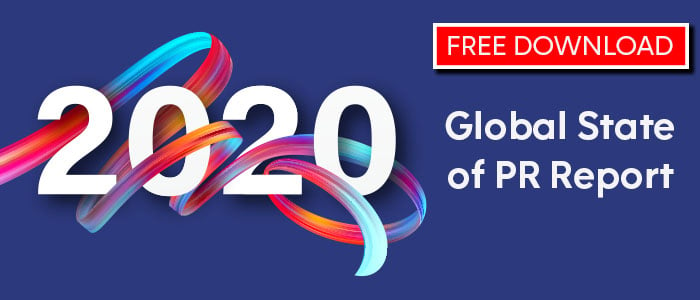Over the past decade, we’ve seen a lot of changes that have impacted the public relations industry. One of the greatest forces behind these changes is the emergence of digital and social media.
In the Asia Pacific alone, there are now over 2.4 billion internet users where countries like the following (top 5) are reported to spend more than six hours per day using the Internet:
- Philippines 9h 45m
- Thailand 9h 01m
- Indonesia 7h 59m
- Malaysia 7h 57m
- Singapore 6h 48m
Gone are the days when your audience’s main source of information about your brand are news stories that you’ve seeded or advertisement that you’ve rolled out. Consumers today prefer to hear about your brand from fellow consumers. Thanks to the digital and social media, your consumers’ voice is now louder than your brand’s voice.
The lines between PR, marketing and social media are increasingly becoming blurred. Check out some key statistics and trends that are shaping the PR industry in Asia below or download the full Global State of PR 2020 report to discover
- Regional benchmarks of top PR offerings
- The role of social listening for PR and marcomms
- How measurement metrics are being redefined
77% consider social media & content marketing as a top PR offering
According to the report, top PR offerings no longer focus on media relations and press offices. Instead, there is now a shift towards digital with social media management (77%), content marketing (77%), influencer marketing (67%), and link building for SEO (56%) being part of PR offerings.
It’s no secret that social media has become an essential part of our daily lives. The audience is becoming more digital-savvy by the day, spending hours creating and consuming content across multiple devices.
Social media and content marketing continue to overlap, and brands in Asia Pacific understand the value of putting social media and content marketing at the center of their communications strategies. In line with this, PR and marcomms have noted that the need for sentiment analysis and image & video analytics are also emerging.
“Over the past few years, in the PR industry, online communications and social media have had an increase in importance. While the continuous advances in the digital and tech space changes the PR landscape, we must not forget about traditional PR skills. We should be combining the elements together in order to create bigger opportunities.” - Tara Munis MPRCA, General Manager PRCA SEA
Engagement (51%) and potential reach/impressions (48%) still used in APAC to prove the value of PR work to stakeholders
One of the many challenges in the PR world is proving the value of the PR work that’s being done. The reality is that there is no single metric that can be used to demonstrate public relations ROI and its impact on the bottom line.
According to the report, APAC practitioners are often reporting on vanity metrics such as engagement and potential reach/impressions more than say, sentiment analysis and share-of-voice. The same trend surfaced in the global findings.
“Public relations is painstakingly realizing the need to measure its performance hence companies and PR agencies together are taking into consideration social listening and PR evaluation tools. However, in a number of cases, the results are being cross-referenced and cross-validated with results gathered using a more traditional way of “listening” and “evaluating” i.e. reputation surveys, brand trackers and Knowledge, Attitudes, Practices (KAPs) analysis. Hence what we see is a more hybridized tool - a combination - to defend the value of PR in the whole customer journey and the business objectives of companies.” - Ron Jabal, CEO PAGEONE Group
FULL REPORT: What metrics are used for PR measurement?
Only 8% of C-level executives use social listening tools
That’s 92% of C-level executives globally missing out on the use of social listening tools that could be critical for reputation and crisis.
In APAC, findings show that Singapore has the lowest usage at 4%, followed by Malaysia (5%), Australia (10%), the Philippines (17%), and the highest usage has been reported for India – an outlier with 25% of C-levels use social listening tools. This could be related to the fact that a relatively higher percentage of C-levels are active on social media in India which would explain why they are interested in tracking their activity.
“The State of PR 2020 report proves that in a landscape characterized by a thinning demarcation of the roles that PR and marketing play in brand building, both find common ground in communication to achieve their ultimate goals. The messages that both roles intend to relay are now conveyed through the same channels such as social media and influencer relations.
[In the Philippines for example] As the digital adaptation is keeping a fast pace, now more than ever, PR professionals must realize the value of using social listening tools in drafting and measuring the impact of the messages they intend to convey to their respective audiences.” - Ana Pista, Founder and CEO, Ardent Communications, Inc. and DBrew Inc.
APAC marcomms & PR pros tend to use more than 1 social listening tool
According to the PR report, the top 3 reasons for using more than 1 tool are:
1. Coverage across all data sources including print and online media
As a market that spans across geographies, APAC marcomms face a challenge in finding regional coverage.
Challenge in finding regional coverage more prominent in MEA & APAC
Even on the country level, this is a challenge. For instance, regional language coverage is a big thing in India in the same vein as the entire APAC region. Hence, there’s a strong demand for multiple tools to ensure proper coverage.
2. Variety of offerings that span from media coverage to social media and influencer analytics
- Report findings show that APAC marcomms & PR professionals use social listening to regularly report on media coverage and social media analytics.
- Executive PR positioning and stakeholder analysis are also more prominently done in India (29%), Singapore (22%), the Philippines (18%), and Australia (17%) through social listening.
- Influencer marketing is also widely recognized as a PR offering particularly for Malaysia (88%) and the Philippines (86%). APAC influencer marketing scorecard available in the report.
“Influencer marketing is increasingly moving towards greater transparency with brand associations and measurement of deeper metrics. Brands are extensively using social listening to understand if any brand associations are being faked and to measure the overall sentiment towards influencer associations.” - Anvesha Poswalia, digital marketing lead at L’Oréal Professionnel and Decléor
3. Client requests and preferences
Particularly for agencies in APAC, the willingness to accommodate clients’ preferences is higher. Markets like the Philippines and India are more flexible to procure tools that a client prefers.
67% likely to increase the budget for social listening tools in APAC for 2020
Next to MEA, APAC companies are more likely to increase their budget for purchasing social listening tools in 2020. Social listening is no longer confined to social media, data & research roles.
Today, PR pros account for 33% of global social listening users but with the PR industry further embracing digital, there’s no doubt that social listening will streamline PR efforts. This is consistent with the overarching industry-wide challenge as we face an abundance of data sources, the demand for consolidation of data and ROI value reporting has increased too.
Ultimately, PR practitioners globally are looking for a single source of truth that combines all their insights in one place.
Get detailed regional analysis and benchmarks to help you unlock your competitive advantage by downloading the full.




